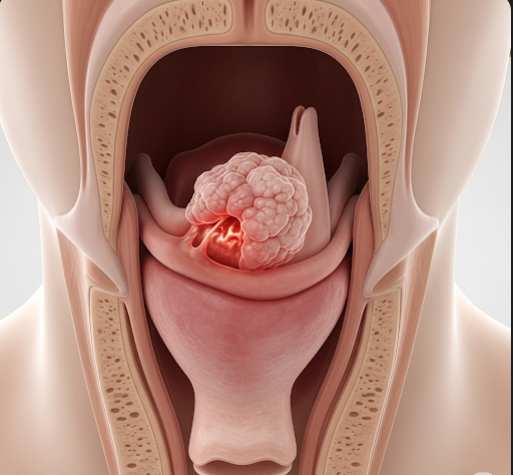Overview
Throat cancer, also known as pharyngeal cancer, is a malignant tumor that develops in the pharynx, larynx, or surrounding tissues of the throat. It can affect the voice box, tonsils, and other areas critical for breathing, swallowing, and speaking. South Korea has advanced oncology centers and head-and-neck surgical expertise, offering early detection, precise diagnostics, and multidisciplinary treatment approaches. Patients benefit from comprehensive care including surgery, radiotherapy, chemotherapy, targeted therapy, and rehabilitation, ensuring the best possible outcomes and quality of life.
What is Throat Cancer?
Throat cancer encompasses cancers of the pharynx (the passage connecting the mouth and nasal cavity to the esophagus) and larynx (voice box). The main types include:
- Squamous cell carcinoma: The most common type, arising from the lining of the throat
- Adenocarcinoma: Less common, originating in glandular tissues
- Lymphoma: Cancer of lymphatic tissue in the throat area
These tumors can affect swallowing, breathing, and speaking, and may spread to nearby lymph nodes or distant organs if untreated. Korean specialists use endoscopic evaluations, imaging, and biopsy techniques for accurate staging and individualized treatment planning.
Symptoms
Early symptoms of throat cancer can be subtle, making prompt evaluation essential. Common signs include:
- Persistent sore throat or feeling of something stuck in the throat
- Difficulty swallowing or pain while swallowing
- Hoarseness or changes in the voice lasting more than two weeks
- Persistent cough or throat clearing
- Swelling or lumps in the neck due to enlarged lymph nodes
- Unexplained weight loss or fatigue
- Ear pain or sensation of fullness in the ear
- Bleeding from the throat or coughing up blood in advanced cases
Early detection through awareness of these symptoms improves treatment outcomes in South Korea.
Causes
The exact cause of throat cancer is multifactorial, involving genetic, lifestyle, and environmental factors:
- Tobacco use: Cigarettes, cigars, or smokeless tobacco significantly increase risk
- Alcohol consumption: Chronic heavy drinking contributes to throat tissue damage
- Human papillomavirus (HPV) infection: High-risk HPV strains, particularly HPV-16, are linked to oropharyngeal cancers
- Poor oral hygiene: Chronic irritation from infections or dental issues may contribute
- Exposure to harmful chemicals or pollutants: Certain occupational hazards increase risk
- Genetic predisposition: Family history of head-and-neck cancers can elevate susceptibility
In Korea, public health campaigns emphasize reducing tobacco and alcohol use and promoting HPV vaccination for prevention.
Risk Factors
Several factors can increase susceptibility to throat cancer:
- Age over 50, though younger adults may be affected, particularly with HPV-related cancers
- Male gender, as men have higher incidence rates
- Tobacco and alcohol use, particularly in combination
- HPV infection, often sexually transmitted
- Occupational exposure to chemicals, dust, or industrial fumes
- Poor diet low in fruits and vegetables
- Chronic gastroesophageal reflux disease (GERD), which can irritate the throat
Korean oncologists assess these risk factors to guide screening and early intervention strategies.
Complications
Untreated or advanced throat cancer can lead to serious complications:
- Difficulty swallowing (dysphagia) and malnutrition
- Obstruction of the airway, leading to breathing difficulties
- Metastasis to lymph nodes, lungs, liver, or bones
- Persistent pain in the throat, neck, or ears
- Speech and voice impairment
- Weight loss, fatigue, and decreased immunity
- Psychological distress due to functional impairment and chronic illness
Comprehensive care in Korean medical centers aims to minimize these complications through early diagnosis and multidisciplinary treatment.
Prevention
Preventive strategies focus on lifestyle modification, vaccination, and regular medical checkups:
- Avoiding tobacco and alcohol: Reduces irritation and risk of malignant transformation
- HPV vaccination: Prevents infection with high-risk HPV strains linked to throat cancer
- Oral hygiene: Regular dental checkups and management of infections
- Diet and nutrition: Adequate intake of fruits, vegetables, and antioxidants
- Occupational safety: Using protective equipment to minimize exposure to harmful chemicals or fumes
- Regular screenings: For high-risk individuals, early detection through endoscopy or imaging can improve outcomes
Public awareness campaigns in South Korea encourage preventive measures and timely evaluation of suspicious symptoms.
Treatment Options in Korea
Treatment of throat cancer in South Korea involves a multidisciplinary approach, tailored to cancer type, stage, and patient condition:
Diagnosis:
- Physical examination and palpation of neck and throat
- Endoscopic evaluation to visualize the tumor
- Biopsy for histological confirmation
- Imaging studies such as CT, MRI, or PET scans for staging and metastasis assessment
- Blood tests to evaluate overall health and suitability for surgery or therapy
Medical Treatments:
- Surgery: Removal of tumors while preserving function, including partial laryngectomy or pharyngectomy
- Radiotherapy: Targeted radiation to destroy cancer cells and reduce recurrence
- Chemotherapy: Systemic treatment for advanced or metastatic cancer, often in combination with radiotherapy
- Targeted therapy: Drugs that specifically attack cancer cells without affecting healthy tissue
- Immunotherapy: Enhancing the body’s immune response against cancer cells in selected cases
Supportive Care:
- Speech and swallowing therapy to maintain or restore function
- Nutritional support to prevent malnutrition during treatment
- Pain management and psychological support
- Regular follow-ups to monitor recurrence and manage long-term effects
Korean hospitals integrate oncology, surgery, radiology, and rehabilitation services to provide comprehensive care, ensuring optimal survival rates and quality of life for patients with throat cancer.













